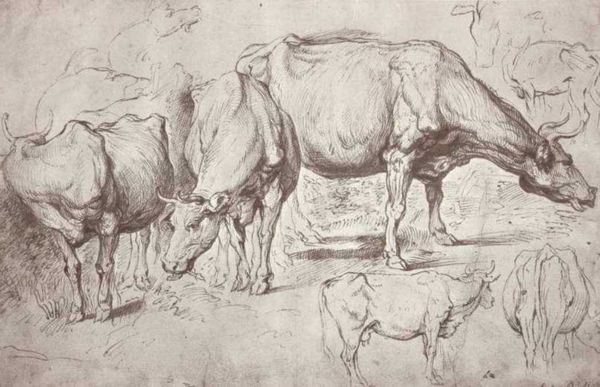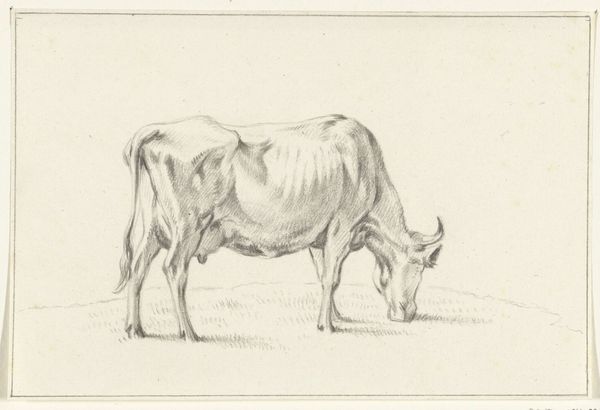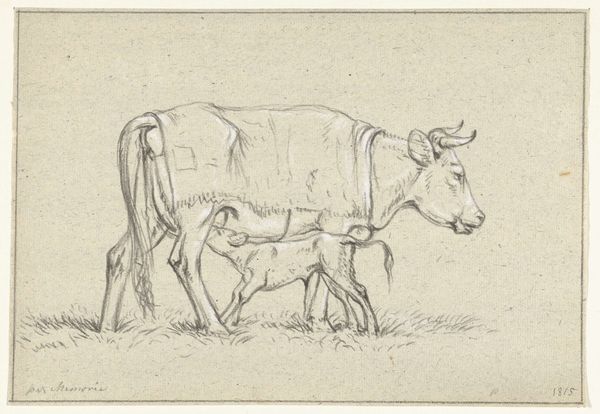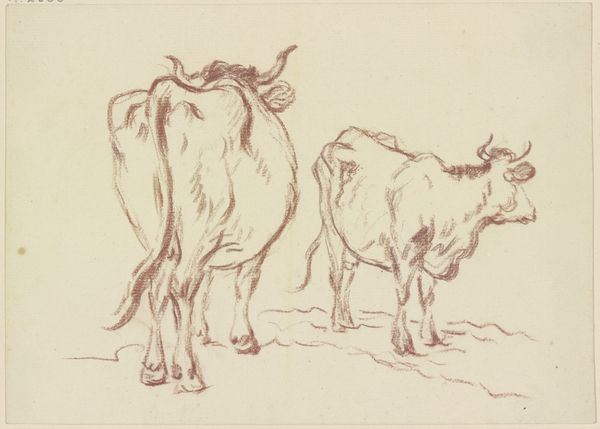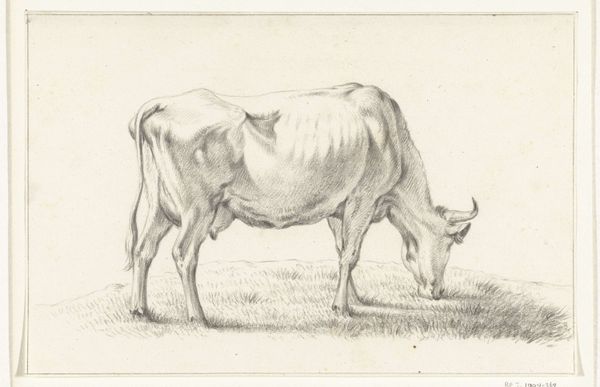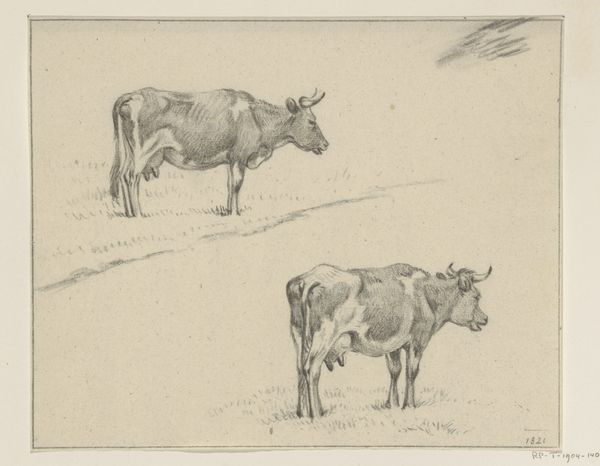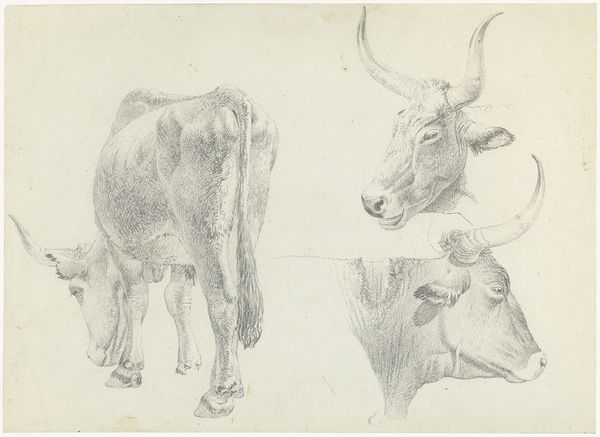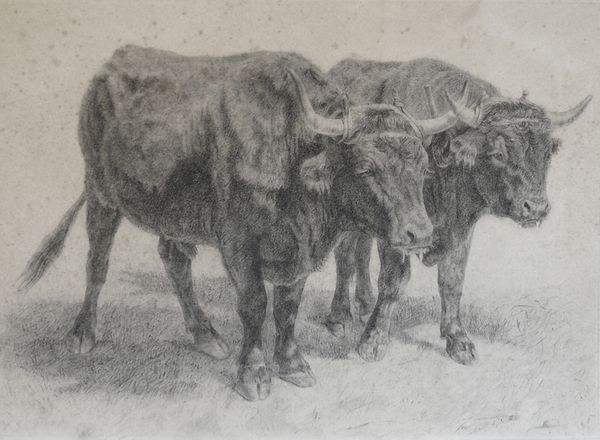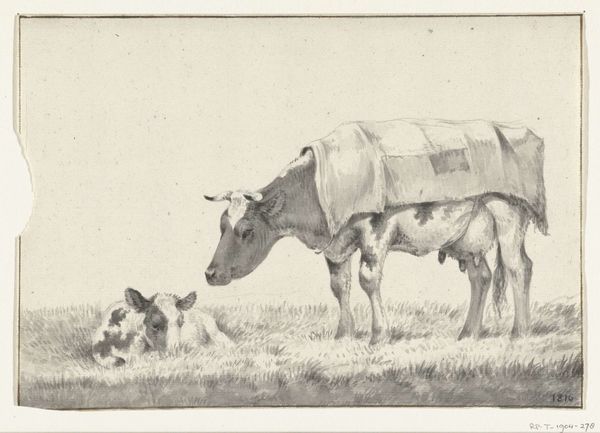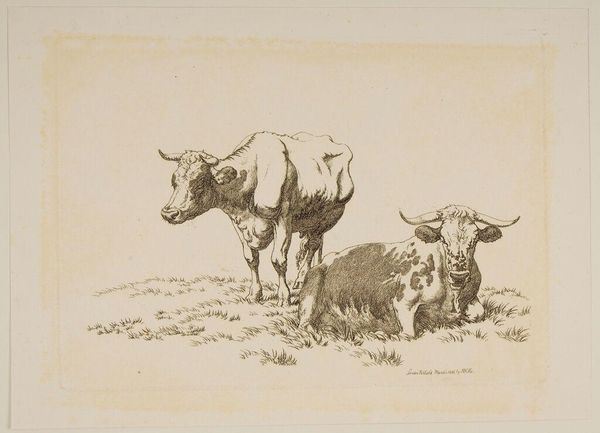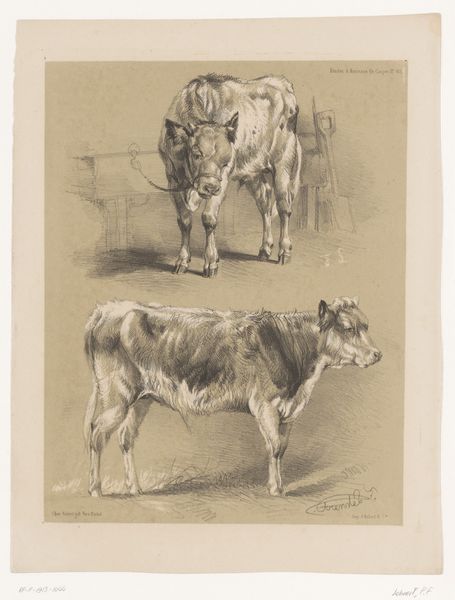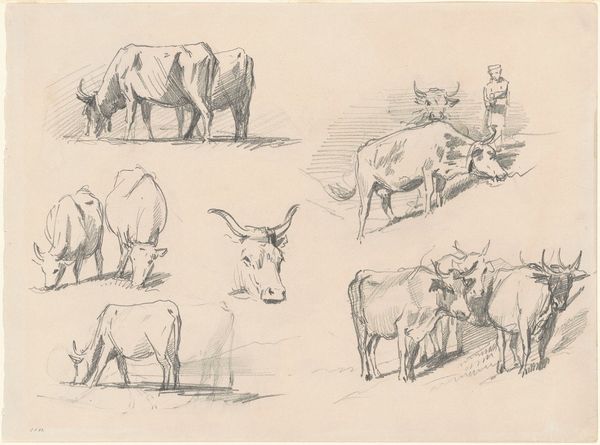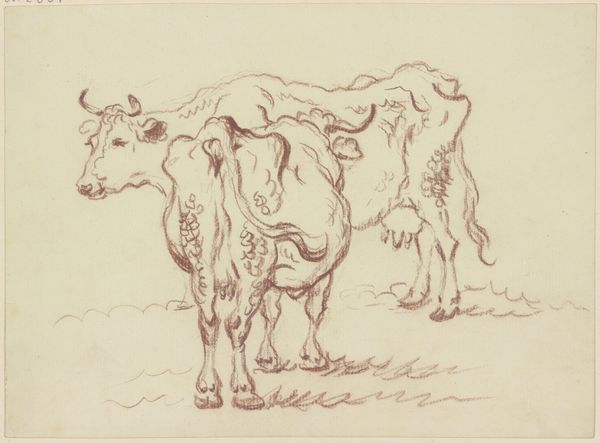
drawing, print, pencil
#
drawing
#
animal
# print
#
landscape
#
charcoal drawing
#
pencil drawing
#
pencil
#
realism
Dimensions: image: 252 x 345 mm sheet: 405 x 543 mm
Copyright: National Gallery of Art: CC0 1.0
Curator: Here we have Stefan Hirsch’s "Cow and Calf," dating from around 1932. It's a drawing, likely a print as well, crafted using pencil and possibly charcoal. Editor: Immediately, I'm struck by how sculptural the forms appear, especially the mother cow. It’s a serene scene, yet the landscape in the background hints at something grander, almost ominous. Curator: Absolutely. Hirsch often explored the tension between rural imagery and modern abstraction. Examining his social circle, particularly his connection to figures like Alfred Stieglitz, it's intriguing to consider how these artists grappled with representing American identity during periods of great change. How did they see rurality? Did they romanticize or acknowledge issues around land use and animal labor? Editor: Those are powerful questions, considering how idyllic this looks on the surface. I see vulnerability alongside this idealization. The calf's dependence, the way the mother shelters it with her body – it's not just a scene of bucolic charm. There is an interesting discourse being presented on motherhood within non-human animals. Curator: Indeed. Consider also the historical context. During the 1930s, America was gripped by the Great Depression. Agricultural communities faced immense hardships. Does this drawing function as an ode to simpler times or a quiet observation of labor and the connections between people and their livestock? And how does the choice of medium - the drawing itself - relate to economic hardship or abundance. What are the politics embedded within realism as an artistic style during times of upheaval? Editor: Thinking about realism, I see a connection with social realism of the period but abstracted somehow, devoid of explicit political messaging and leaning into the aesthetic dimension and subtle drama of light and shadow. And that's an interesting move, since Hirsch also had ties to movements exploring leftist politics. Maybe Hirsch wasn’t overtly didactic in his artworks. His focus seemingly shifted towards examining intimacy between two creatures in harsh rural contexts. Curator: Precisely, these dualities present avenues for interpreting it through different lenses – one viewing this artwork as purely aesthetic versus analyzing deeper social dimensions, while acknowledging its intersectional context. Thank you. Editor: Thank you. The depth of consideration needed in approaching works like this is striking.
Comments
No comments
Be the first to comment and join the conversation on the ultimate creative platform.
